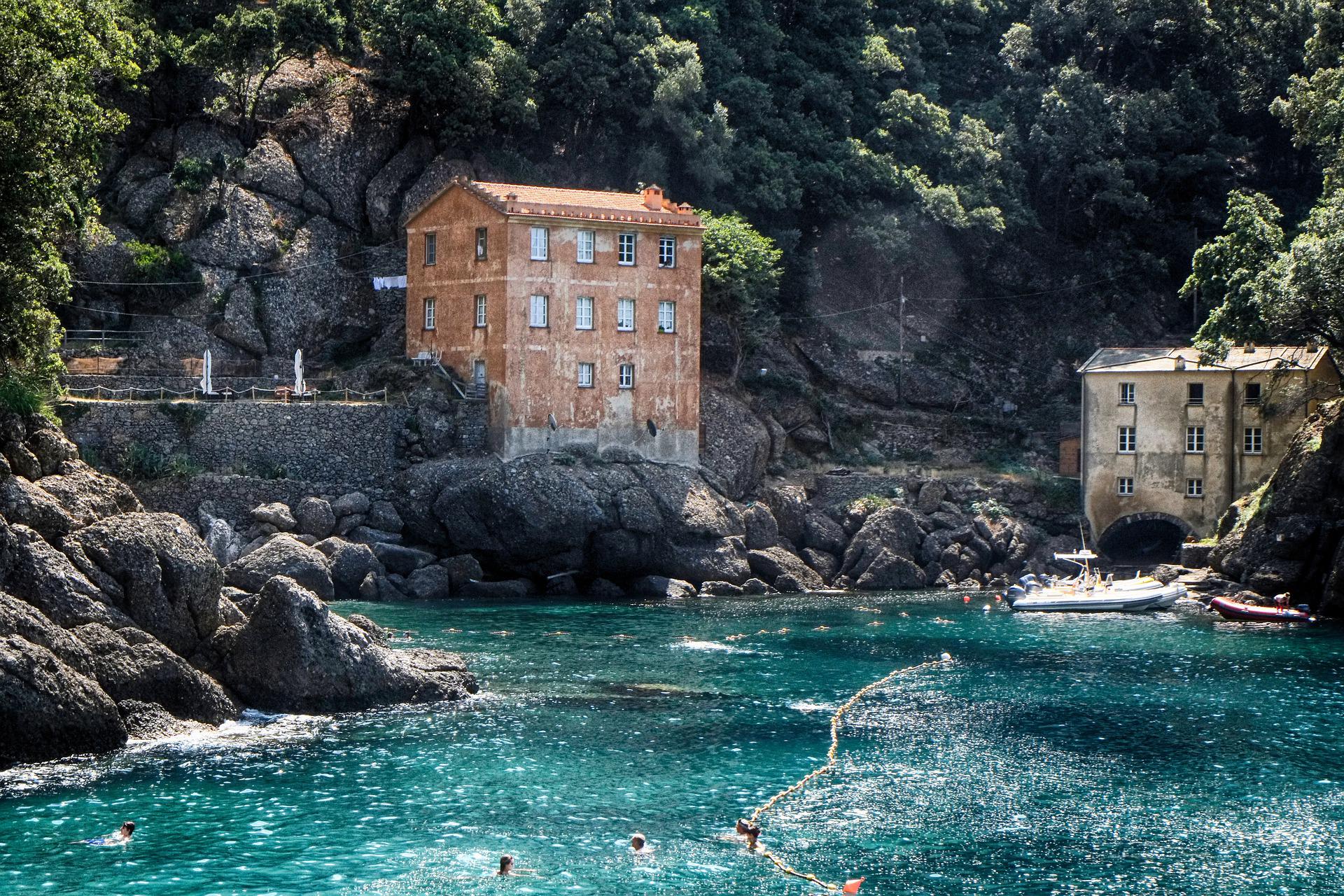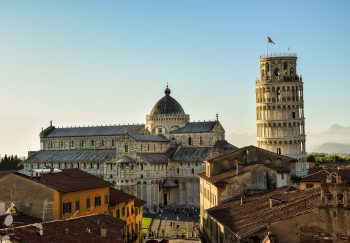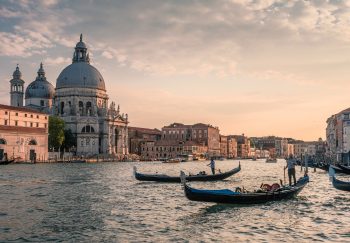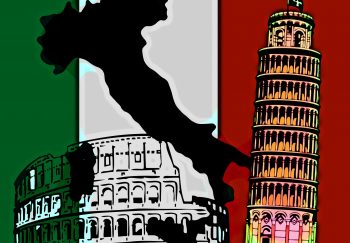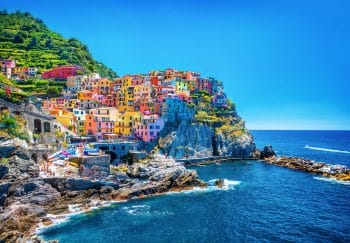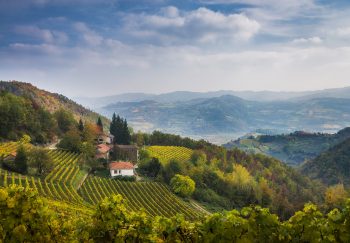Through the second-story windows’ dark green shutters, the sound of silverware clinking and lunchtime conversations drifted into an alleyway. A pair of cupids sculpted above a bakery was visible in the distance. I slowed down to inhale the sweet aromas of baking.
As a woman approached me from the church, the bell rang. “Scusi signora, I stopped her before he could ask for directions. I smiled and explained in my poor Italian that I was also lost. I smiled back and continued on my way through the dark streets of Genoa’s historic center.
Most people find it hard to smile when they get lost. It was a joy to lose your way in the maze-like medieval streets of Genoa’s Centro Storico.
This idyllic area is located between the port and the city’s terraced hillside. It is believed to be Europe’s largest historic town center. This picturesque port city is surrounded by forts and old walls. It also has many Renaissance palaces, and richly decorated churches like Annunciation (16th century) and St. Ambrose (16th century).
The Cathedral of San Lorenzo, which was rebuilt in 1100 and is often restored, is probably Genoa’s most iconic building. I decided to put aside my difficult-to-follow map and realized that surrendering to Genoa and letting her show herself was the best way to discover the true essence of this ancient city.
Genoa is the main seaport of Italy, and it’s a beautiful location on the Gulf of Genoa. It is also a major industrial and commercial center. Genoa is home to approximately 700,000.
Micaela, a fiery red-haired, 20-something, part-time singer of pop music, was one of them. She was excited to show us Genoa’s most prominent sights, just like the Genovese.
Genoa was designated a European Cultural Capital in 2004 and Micaela, a local, were thrilled to display their city, Genoa, La Superba (The Haughty), which is what the city got during its maritime boom of the 13th through the 20th centuries.
However, I was most drawn to Genoa the humble. Micaela took us to the Porto Antico (Old Harbor), which was badly damaged during World War II, and was rebuilt in 1992 when Genoa celebrated its 500th anniversary of Christopher Columbus’s voyage.
I wandered away from the modern plaza, designed by Lorenzo Piano, to the peoplesy food stalls.
Under sunflower-colored tents they sold regional specialties. What was to become my favorite Genovese snack? A thin, lightly salted focaccia bread that is hot and stuffed full of melted cheese.
The Starhotel President is our home base. It’s located in the urban area, a short distance from Via Settembre XX. This 19th-century boulevard, flanked by a sculpted arched arcade, serves as an entrance to designer shops and chain stores, and eventually reaches the historic heart of the city.
Again, I found myself drawn to the main thoroughfare and stumbled upon a hidden treasure: the vibrant Mercato Orientale. This market, which was once an Augustinian monastery, is now a stop for housewives who visit it daily to get the harvest of the season.
Basil overflowing piles were the most memorable sight and smell at the bustling market. I was pleasantly surprised by the size and vibrancy of the basil leaves. This basil-made pesto in Genoa was my favorite. I had it at every meal.
We toured the palaces that surround the historic center. The Palazzo Ducale’s creamy yellow-and rose facade, which was once the Doges Palace, caught my eye. As I got closer, it became clear that I was actually admiring a tromp l’oeil masterpiece. Micaela explained that the Genovese are known for being very cheap. “They didn’t want to spend any money on stone masons so they created an art of painting in order to create three-dimensional effects.”
This Genovese optical trick of the perspective was a fall for me more than once. When I was at the Renaissance Palazzo Rosso, on Via Garibaldi., I kept making double-takes at the ceiling fresco. I was a little confused. After examining it from every angle, I realized that I had been deceived once again.
I was stopped by a quartet of Jazz musicians in front of San Lorenzo cathedral. Their simpleness was contrasted by a dizzying Gothic backdrop of black-and-white marble strips, curlicue columns, and stone lions. This scene was a gem in Genovese history, combining the ordinary with the extraordinary.
The treasure-filled labyrinth that runs from the cathedral square can be seen in all directions, starting at the cathedral square. My curiosity piqued, so I set out on my own from the tour group to explore mysterious pathways that ran between seven-story high buildings.
Genoa’s merchants were the ones who created the historic center. Each family staked its territory and built its own churches and palaces. As they became more wealthy, they added additional structures.
It was once the scene of a series of back-stabbery and chases between feuding family members. It was peaceful and tranquil as I walked through it centuries later. It was almost completely tourist-free and there were no cars. I felt at home among the working-class locals.
It felt like you were walking through an open-air museum. The sun filtered through the shadows and lit up the room. Votive stone figurines, called edicole, were found jutting out of second-story corners in pale gold and ochre buildings. I also saw Biblical scenes cut into friezes high above the doors.
One alley led to the Piazza Campetto where I saw painters working on scaffolding to restore the pastel facade of Imperial Palace. I was taken to the loggia of the goldsmith by a steep staircase attached to the palace. Fabrorum is now located in this space. It houses a laboratory, museum, and store that showcases the traditional Genovese art known as gold filigree. Beautiful pieces of jewelry and necklaces for sale were displayed in elegant rooms. Although I was given a tour of their jewelry laboratory, I refused to go, as I wanted more street-style flavor.
Klainguti was a coffee shop or cafe that dates back to 1826. This is where Giuseppe Verdi spent 40 winters. Beyond the confection, counters were small Rococo salons that connected with crystal-cut mirrors and chandeliers.
As if they were displaying life in another century, the stores I found could have been draped with velvet and decorated with baroque-painted or sculpted signs. There were white-tiled butchers with marble-slab counters and pharmacies with colorful ceramic containers displayed in dark wood cases. And there were dusty engraving workshops.
Although the shopkeepers did not speak English well, it was easy to browse with smiles and hand signals. The Genovese is not like other Italian cities. They haven’t been overrun by tourists. The city’s authenticity has not been compromised. Locals are patient and accommodating. There were also no long lines at museums or overcrowded restaurants.
Everyone in our group shared stories about their experiences in the “labyrinth” at our farewell dinner.
Tom had been to Genoa’s Jazz Museum. It documented the lives of the musicians who played at the city’s festivals and nearby resorts. Antonia displayed a pair of chic, pearly shoes that she had purchased at a bargain price.
I had just bought a handmade cut-glass lavender bracelet. As it sparkled on my wrist, I made a toast to the bracelet: “To return for further days of getting lost in Genoa and finding Genoa’s treasures.”
Go
Italian State Tourist Board
www.enit.it
Genoa Tourist Board
www.genovatouristboard.net
